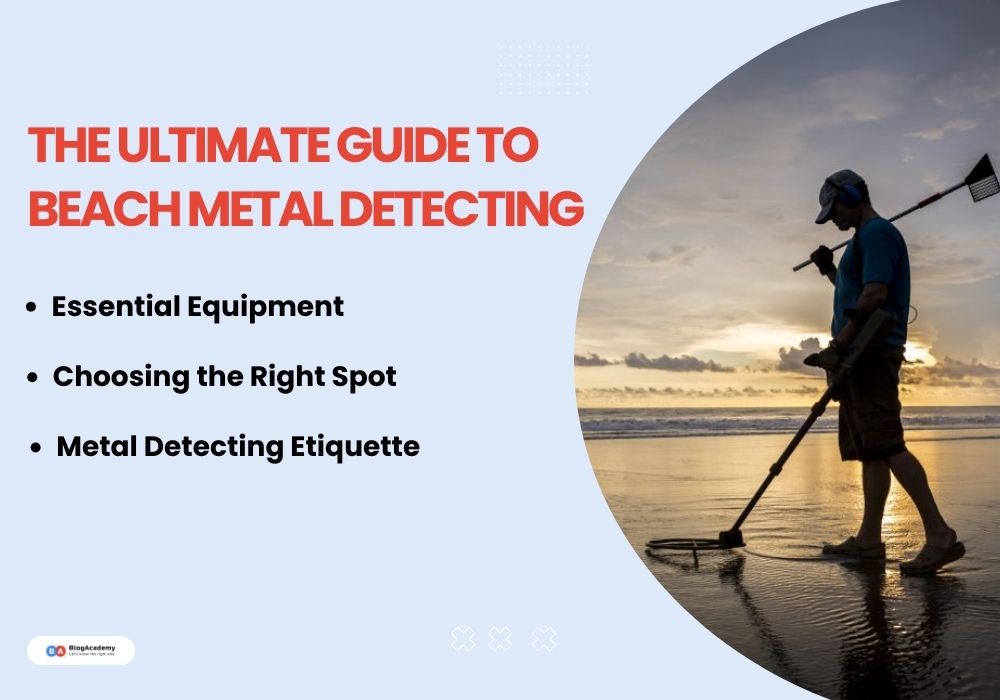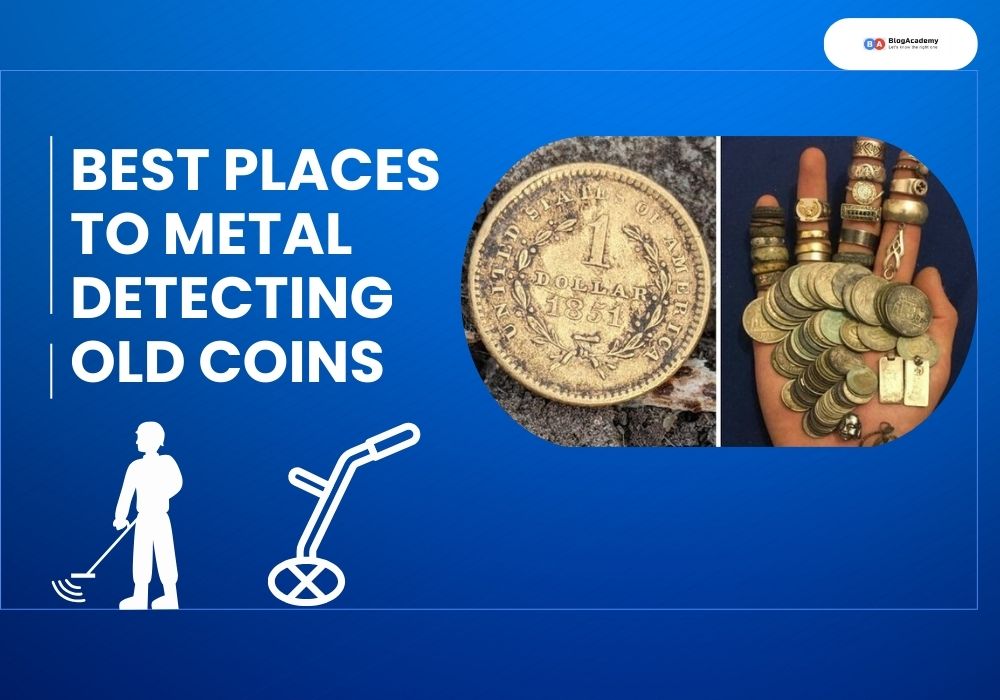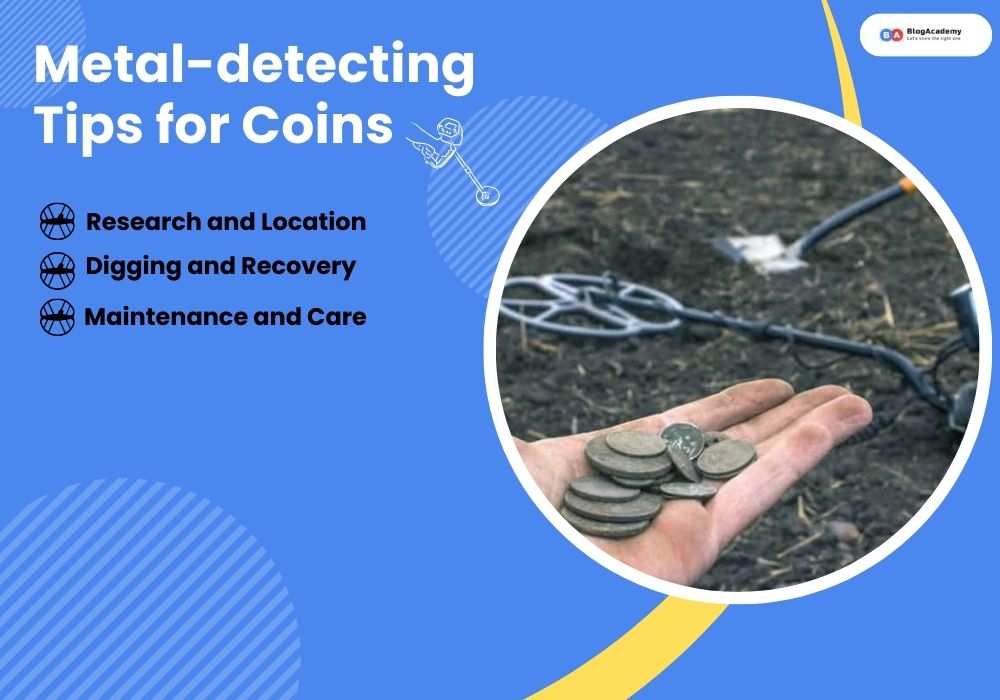Beach metal detecting isn’t just a hobby; it’s an exhilarating adventure that uncovers history, valuables, and cherished memories. Welcome to ‘The Ultimate Guide to Beach Metal Detecting’! This is all about finding cool stuff on the beach using metal detectors. Whether you’re new or experienced, it’s packed with tips, gear advice, and tricks to help you find treasures like coins and old artifacts.
In this ultimate guide, we’ll delve into the art and science of beach metal detecting, equipping you with the knowledge and tips to embark on your treasure-hunting journey.
Why Beaches for Metal Detecting?
Beaches serve as natural repositories for lost items. The constant ebb and flow of tides, coupled with human activity, create a haven for buried treasures. Countless coins, jewelry, and artifacts find their way into the sand, awaiting discovery.
Here’s how you can embark on your beach metal-detecting journey:
Essential Equipment
Before setting foot on the sandy shores, it’s crucial to assemble the right tools for the job. Here’s a breakdown of the essential equipment:
- Metal Detector: Opt for a waterproof and salt-resistant detector designed explicitly for beach hunting. Models with discrimination settings help distinguish trash from treasure.
- Scoop or Sand Scoop: A durable, rust-resistant scoop aids in digging and retrieving targets buried in the sand.
- Headphones: Invest in quality headphones to hear faint signals amidst the beach’s ambient noise.
- Pouch or Bag: Carry a pouch or bag to store your finds safely.
Choosing the Right Spot for Beach Metal Detecting
Not all beaches are created equal when it comes to metal detecting. To maximize your chances of finding treasures, consider these factors:
- High-Traffic Areas: Focus on spots where people gather, such as near beach entrances, volleyball courts, or picnic areas.
- Tidal Changes: Search during low tide when more of the beach is exposed, revealing hidden items that were previously underwater.
- Historical Significance: Research the history of the area. Beaches near old piers, shipwrecks, or historical sites often yield interesting finds.
Metal Detecting Etiquette
Responsible metal detecting ensures preservation and respect for the environment and fellow beachgoers:
- Fill Your Holes: Always refill any holes you dig. Leave the beach as you found it to maintain its beauty and prevent hazards for others.
- Follow Regulations: Some beaches have specific rules regarding metal detecting. Be aware of and adhere to these guidelines.
- Respect Others’ Space: Avoid interrupting sunbathers or disturbing sensitive areas like protected dunes or wildlife habitats.
Techniques for Success Beach Metal Detecting

Effective metal detecting requires more than just sweeping the detector across the sand. Here are some tips to enhance your technique:
- Slow and Low: Move the detector slowly and as close to the ground as possible for optimal coverage.
- Overlap Sweeps: Overlap your sweeps to ensure you cover the entire area systematically.
- Pay Attention to Signals: Learn the different sounds and signals your detector makes for various metals to distinguish valuable targets from junk.
- Proper Digging Technique: Use your scoop or shovel to dig a neat, shallow hole, minimizing disruption to the beach.
Examples of Beach Finds
The excitement of beach metal detecting lies in the unexpected treasures waiting beneath the sand. Here are some thrilling discoveries made by enthusiasts:
- Coins: From modern-day currency to ancient coins, beaches often hide loose change and historical currency.
- Jewelry: Rings, bracelets, and necklaces lost by beachgoers are commonly discovered treasures.
- Relics and Artifacts: Some beaches have historical significance, offering relics from past civilizations or remnants of shipwrecks.
- Military Items: In areas with a military history, finding bullets, buttons, and medals is not uncommon.
Beach Metal Detecting Real-Life Success Stories
- The Silver Coin Cache: John, a beginner detectorist, stumbled upon a cache of ancient silver coins near an old pier. His persistence and research into the area’s history paid off when his detector signaled a strong metallic presence.
- The Lost Engagement Ring: Sarah, an experienced detectorist, helped a tearful beachgoer find her lost engagement ring. A quick scan and precision digging led to its recovery, earning her immense gratitude.
What is the best setting for beach metal detecting?
The best settings for beach metal detecting usually involve using a lower discrimination level to catch various types of metal items like coins, jewelry, or relics while minimizing the filtering of signals.
Set sensitivity to cover a depth that suits the beach terrain—deeper in softer sand, slightly shallower in hard-packed areas. Opt for a lower frequency (around 5-10 kHz) to better detect smaller items and deal with highly mineralized sand.
Use a smaller search coil for better maneuverability in tight spots or a larger coil for covering more ground quickly. Keep the detector close to the ground and swing it steadily to cover more area efficiently. And lastly, ensure you’re respectful of the environment and local regulations while detecting!
What part of the beach is best for metal detecting?
The best spot for metal detecting on the beach is usually around the towel line or where people tend to sit or lie down. This area often holds lost jewelry, coins, or other items that might have slipped out of pockets or off fingers.
The sand here is usually compacted and it’s a common place for activities, so there’s a higher chance of finding something interesting. Also, after storms or high tides, it’s great to check closer to the waterline, where items might have been brought in or uncovered. Always make sure to check local rules and regulations before detecting to respect the environment and any restrictions.
Conclusions
Beach metal detecting isn’t just a hobby; it’s an exhilarating experience connecting you with history and the thrill of discovery. Armed with the right equipment, knowledge, and ethics, anyone can delve into this captivating pursuit. Remember, beyond the tangible finds lie the intangible rewards of exploration, patience, and the joy of preserving our beaches.
So, grab your detector, head to the shore, and let the adventure unfold beneath your feet!



